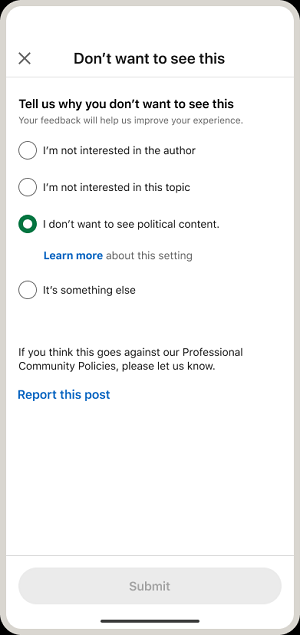User activity on LinkedIn continues to rise, with the platform reporting ‘record levels’ of engagement growth for six quarters in a row and counting, and as broader economy continues its resurgence, in the wake of the pandemic, you can expect LinkedIn interactions to continue their upwards trajectory.
But as always, where there’s more opportunity for attention, there will also be ‘growth hackers’ and those looking for ways to game platform algorithms to maximize their content performance.
Which makes sense – these days, most social media managers have engagement targets built into their KPIs, and more exposure can only help in providing more potential for brand attention, leading, ideally, to more valuable connections and business. But eventually, when everybody’s doing the same thing, it can get to be a bit much – which is why LinkedIn is now moving to update its algorithms to crack down on certain posts and post types that users have had enough of.
So what’s on the outs in LinkedIn’s view?
First off, LinkedIn says that people don’t like engagement baiting posts:
“We’ve seen a number of posts that expressly ask or encourage the community to engage with content via likes or reactions – posted with the exclusive intent of boosting reach on the platform. We’ve heard this type of content can be misleading and frustrating for some of you. We won’t be promoting this type of content and we encourage everyone in the community to focus on delivering reliable, credible and authentic content.”
Some of these are the same types of posts that Facebook dealt with when it first introduced Reactions, with people using Reactions essentially as a polling device, asking users to allocate a certain Reaction emoji to signify their response.
Which can definitely juice your engagement, but LinkedIn is not happy about it, and if you are going to try this approach, know that you may get penalized for such from now on.
Also, too many polls:
“We’ve heard feedback that there are too many polls in the feed. We’re taking steps to be smarter and show you only those that are helpful and relevant. That means fewer polls from people you don’t know and more from those you’re more likely to engage with from your network.”
Polls are also a bit of cheat code to LinkedIn engagement, with the simplicity of engaging making it a tempting lure to get more engagement.
But again, now the marketers have overdone it, and LinkedIn users have had enough of polls for the time being. That’s not to say you shouldn’t use them, but just be wary that they won’t reach as far any more, and they may not be as beneficial as they have been.
On another front, more users are now able to opt out of political content in the app:
“We heard from some of you that you don’t want to see political content. To fix this, we’re testing a way to give you the option to reduce political content in your feed. While we’re only testing currently in the US, based on feedback we receive, we may further develop the feature and expand it to more regions and languages.”

LinkedIn actually started testing this back in February, and is now expanding that test to more users, ahead of, potentially, a broader launch.
It’s an interesting experiment – and really, for the most part, political posts probably don’t fit on LinkedIn anyway. But then again, many people do work in political and advocacy roles which could, theoretically, also be caught up in this, which may impact platform reach and performance for some users and brands.
That’s a key note, and something for related businesses to keep an eye on – because if enough people do indeed choose to switch off political posts, the impact could be significant.
Finally, LinkedIn is also working to reduce its notifications, so you won’t see as many updates from your network.
“For example, you may not get a lot of value from seeing a connection’s comment on someone else’s post about a job change if you don’t know that other person. That’s why we’ll be showing you more targeted activity from your network, and where you’ll be more likely to join the conversation, too.”
It’ll be interesting to see how good LinkedIn’s algorithm can be at understanding your interests, and alerting you to the most relevant updates based on these parameters.
As always, if you’re seeing content in your LinkedIn Feed that isn’t relevant or interesting to you, you can help to improve your experience by tapping on the three dots menu on any post and selecting “I don’t want to see this”. LinkedIn also recently updated this option, so that you can now indicate that you don’t want to see as much content from a certain creator/author, or a topic.
These will no doubt be welcome changes for many LinkedIn users. I mean, the polls were getting pretty crazy, and engagement baiting on any platform is always a bit needy.
You’ll likely notice a change in your LinkedIn feed over the next few weeks.



